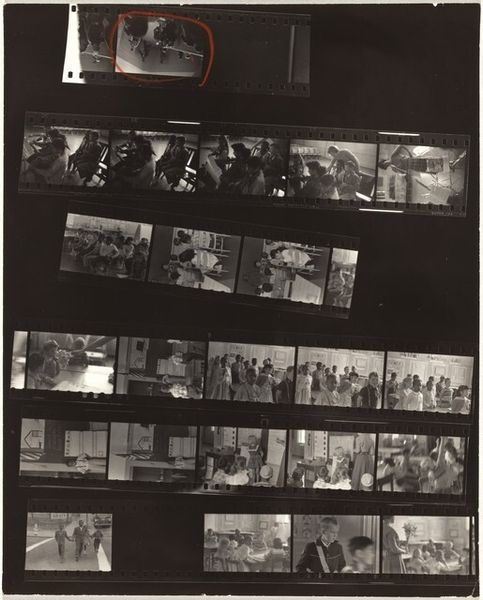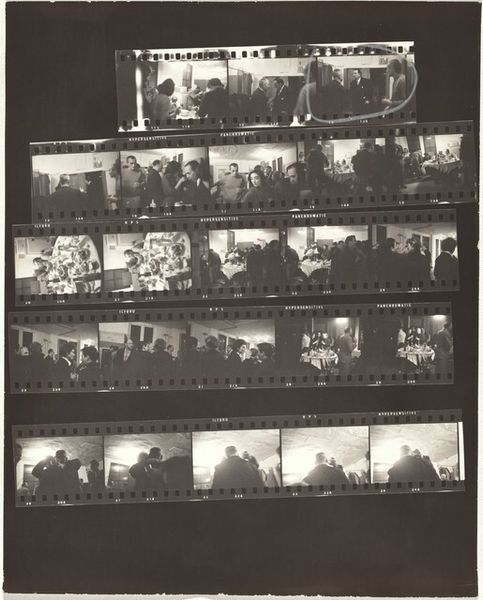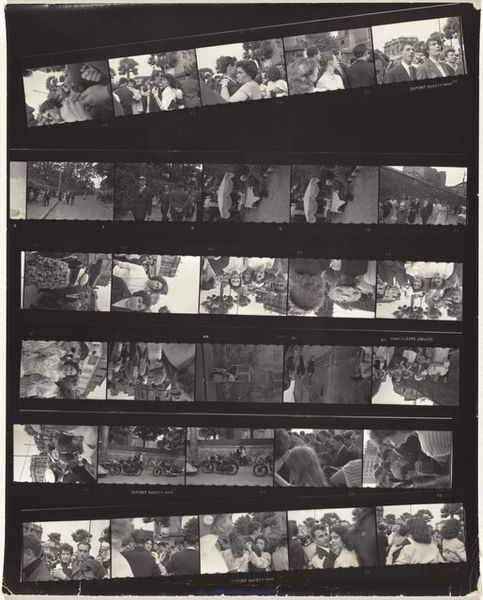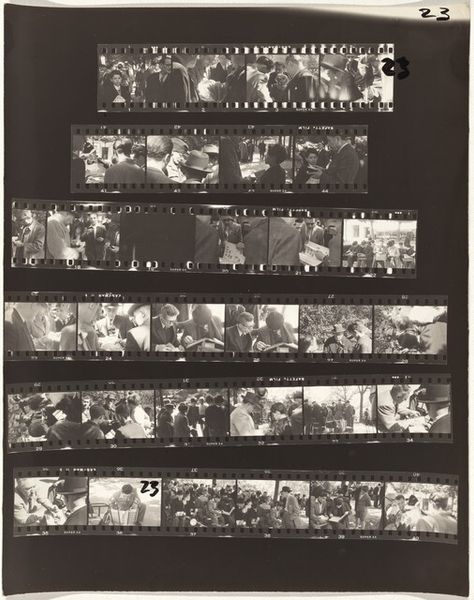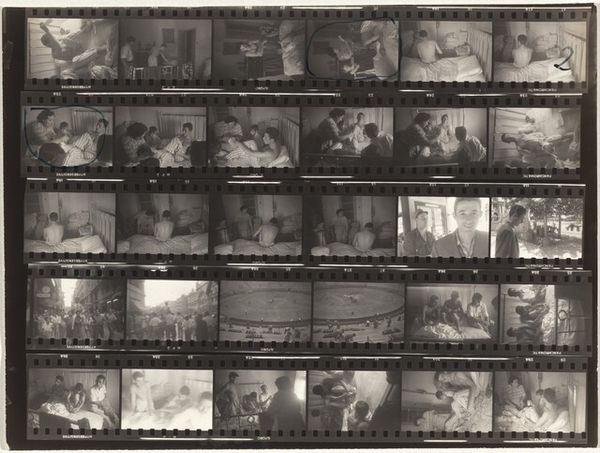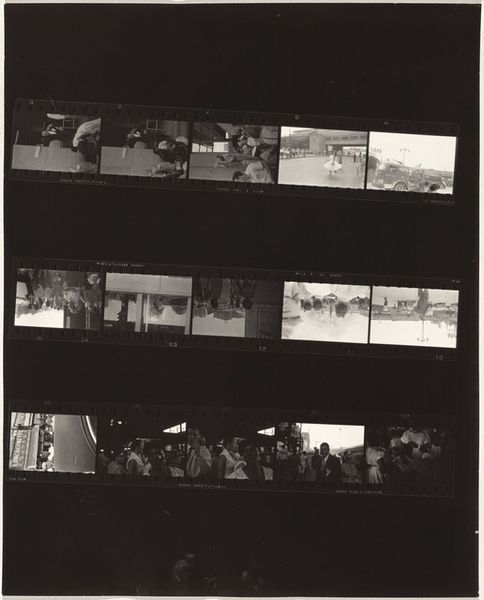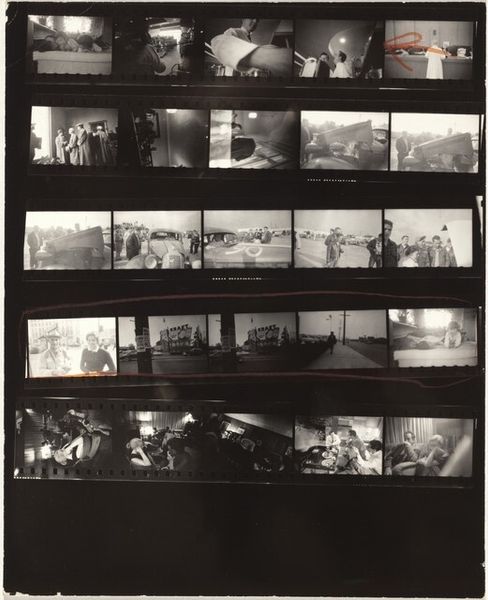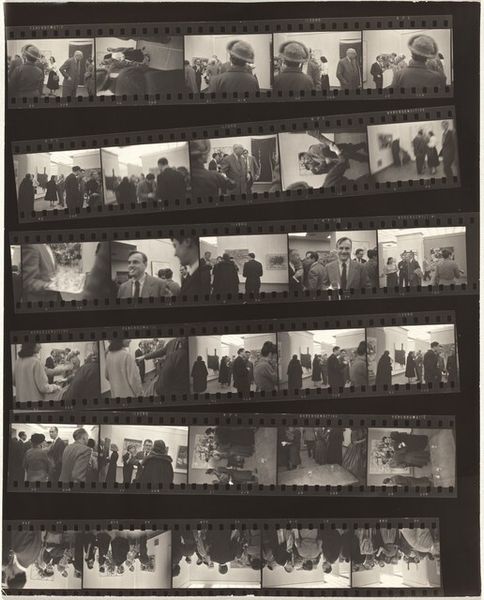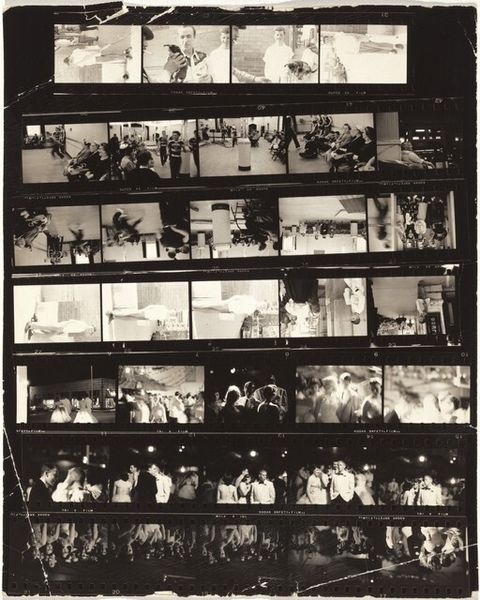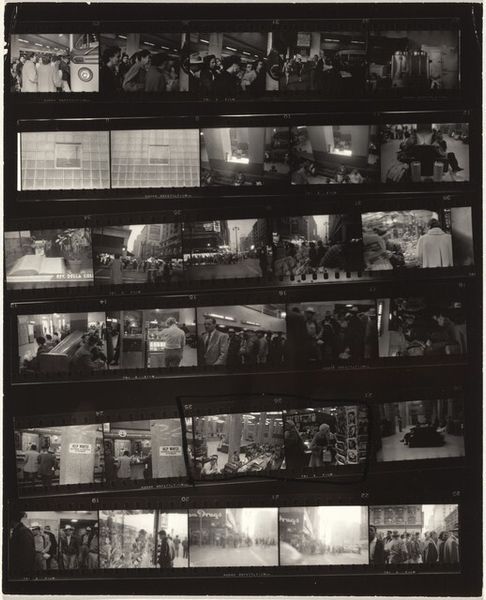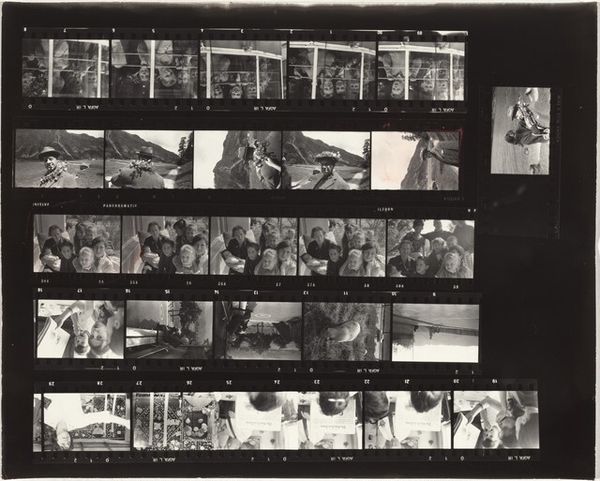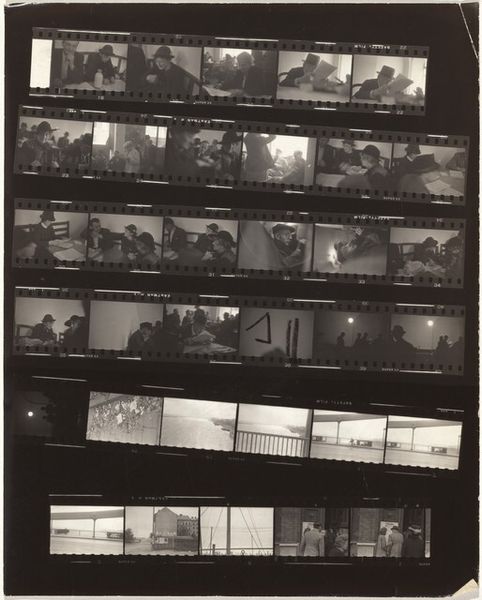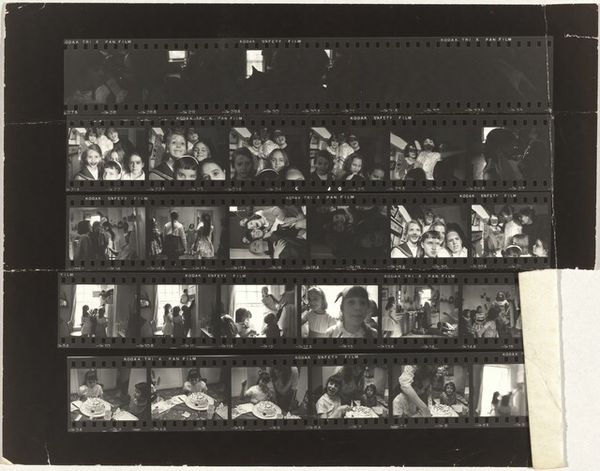
Dimensions: overall: 13 x 20.3 cm (5 1/8 x 8 in.)
Copyright: National Gallery of Art: CC0 1.0
Editor: Here we have Robert Frank’s "Coney Island no number," a gelatin silver print from around 1950 or 1951. The strips of photographs create this fragmented effect. What’s striking to me is how it captures seemingly ordinary moments, but presents them in this almost raw, documentary style. What do you see in this piece, beyond just a series of snapshots? Curator: It's more than snapshots, absolutely. Consider the sociopolitical context. Post-war America was experiencing a constructed narrative of prosperity and homogeneity, often erasing marginalized voices. Frank, an immigrant himself, captures a different reality, exposing the fault lines in that narrative. Editor: Fault lines? Curator: Look at the composition. The fragmented strips themselves become a visual metaphor for a fractured society. Consider Coney Island itself - a place where social classes momentarily mix, yet inherent inequalities and social tensions persist beneath the surface. How does the monochrome add to this feeling? Editor: It definitely feels stark and less romantic than colour photography might. Almost journalistic? Curator: Precisely. He isn’t aiming for beauty, but for truth, as he perceives it. The "decisive moment," made famous by Cartier-Bresson, is complicated here. Is Frank capturing decisive moments, or simply revealing a constant, underlying state of tension and unease? Think about how these photographs may act as a mirror reflecting the diverse social fabric of the United States and how they open conversations around issues of inequality, race, and social mobility. Editor: That’s powerful. It’s like he's challenging the dominant narrative by showing these slices of real life. Curator: Exactly. Art can provoke necessary discussions around social justice. These seemingly casual street scenes carry a significant message of challenging dominant societal perspectives. Editor: I never thought about it that way. I thought it was more observational, but understanding Frank’s background and the time period shifts the entire meaning. Curator: It's a good reminder of the power of context!
Comments
No comments
Be the first to comment and join the conversation on the ultimate creative platform.
